augustus 29th, 2009
Olafur Eliasson
Green River, Stockholm, Sweden, 2000
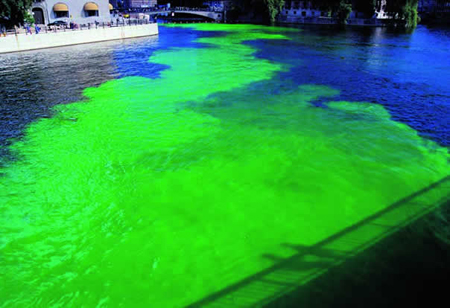
Green River, Moss, Norway, 1998
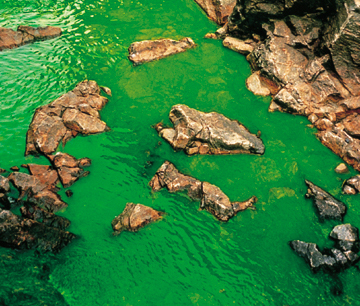
‘One Friday at half past one there I was on the bridge with Emile and a bag full of red powder and people starting to stare at us. I hesitated for a moment then emptied the bag out over the parapet and the wind whipped up this enormous red cloud. I could literally feel people in cars slowing down, the cars went all quiet. And there was this cloud, floating over the river like a layer of gas. When it came in contact with the water, all of a sudden the river turned green, it was like a shock wave. There was a crowded bus ten metres a way and everybody was staring at the water. I told Emile we should maybe move on, as if everything was perfectly normal, then I carefully put the bag in a trashcan, as if colouring the centre of Stockholm was the kind of thing I did every day. I went down to IASPIS and when I came out again my heart started jumping up and down like mad: the whole length of the river was completely green and all these people had stopped to look at it. Next day it was all over the front page of the papers: “The river turned green”. The colorant was absolutely harmless and there was no pollution whatsoever’.
Abstract of a conversation between Hans Ulrich Obrist and Olafur Eliasson, 2002
Posted in Ecology, Geology, Visual Arts | Reacties uitgeschakeld voor The River Is Always Greener On The Other Side
augustus 29th, 2009
Christo and Jeanne-Claude
Surrounded Islands, Biscayne Bay, Greater Miami, Florida, 1980-83
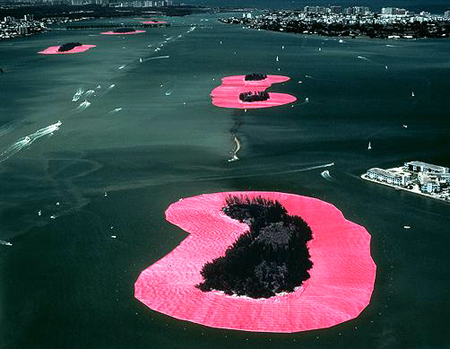
On May 7, 1983 the installation of Surrounded Islands was completed. In Biscayne Bay, between the city of Miami, North Miami, the Village of Miami Shores and Miami Beach, 11 of the islands situated in the area of Bakers Haulover Cut, Broad Causeway, 79th Street Causeway, Julia Tuttle Causeway, and Venetian Causeway were surrounded with 585,000 square meters (6.5 million square feet) of pink woven polypropylene fabric covering the surface of the water, floating and extending out 61 meters (200 feet) from each island into the Bay. The fabric was sewn into 79 patterns to follow the contours of the 11 islands.
For 2 weeks Surrounded Islands spreading over 11.3 kilometers (7 miles) was seen, approached and enjoyed by the public, from the causeways, the land, the water and the air. The luminous pink color of the shiny fabric was in harmony with the tropical vegetation of the uninhabited verdant island, the light of the Miami sky and the colors of the shallow waters of Biscayne Bay.
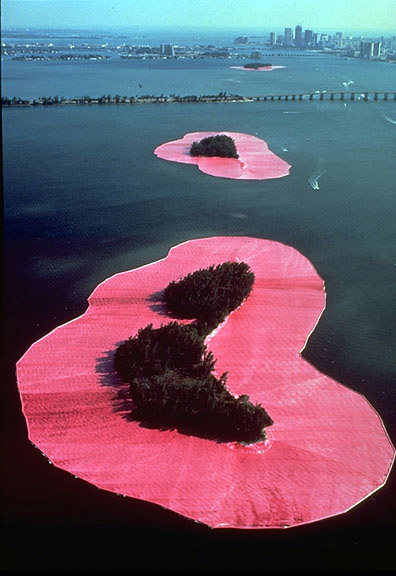
Photo: Wolfgang Volz ©1983 Christo
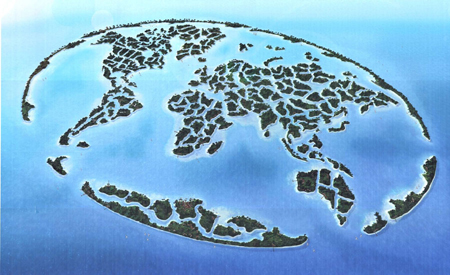
The World is a man-made archipelago of 300 islands constructed in the rough shape of a map of the landmasses of the Earth, located 4 kilometres off the coast of Dubai, United Arab Emirates.
Posted in Geomorphology, Visual Arts | Reacties uitgeschakeld voor Inland Islands
augustus 29th, 2009
Richard Long
Circle in the Andes, 1972
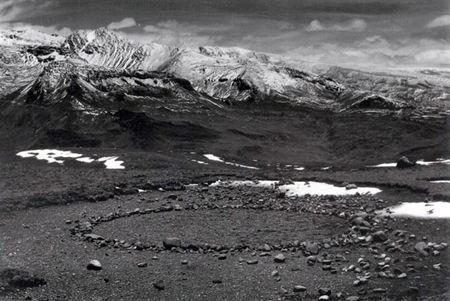
‘Nature has always been a subject of art, from the first cave paintings to twentieth-century landscape photography. I wanted to use the landscape as an artist in new ways. First I started making work outside using natural materials like grass and water, and this led to the idea of making a sculpture by walking. This was a straight line in a grass field, which was also my own path, going ‘nowhere’. I like the idea of making something from nothing. In the mid-sixties I began to think that the language and ambition of art was too formal and orthodox. I felt it had barely engaged with the natural landscapes which cover our planet, or used the experiences those places could offer. Starting from my home territory and gradually spreading further afield, my work has tried to explore this potential. I see it as abstract art laid down in the real spaces of the world. It is not romantic; I use the world as I find it’. – Richard Long –
Dusty Boots Line Sahara, 1988
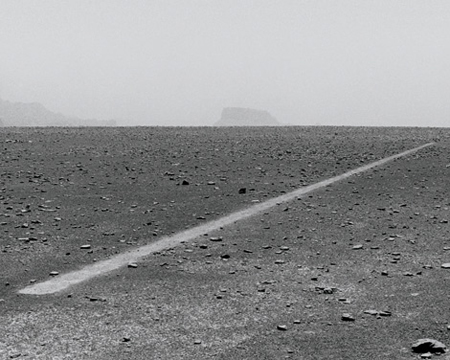
Michael Heizer
Double Negative, 1969-70
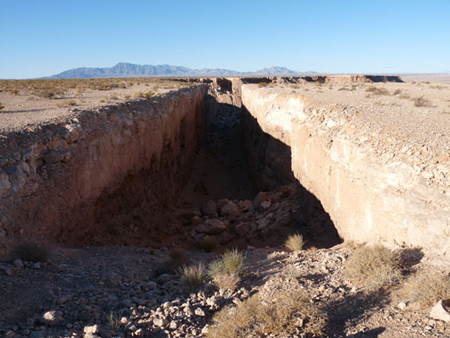
Double Negative is Michael Heizer’s first prominent earthwork. Double Negative consists of two trenches cut into the eastern edge of the Mormon Mesa, northwest of Overton, Nevada in 1969-70. The trenches line up across a large gap formed by the natural shape of the mesa edge. Including this open area across the gap, the trenches together measure 1,500 feet long, 50 feet deep, and 30 feet wide (457 meters long, 15.2 meters deep, 9.1 meters wide). 240,000 tons (218,000 tonnes) of rock, mostly rhyolite and sandstone, was displaced in the construction of the trenches.
Posted in Petrology, Visual Arts | Reacties uitgeschakeld voor The Walk of Fame







